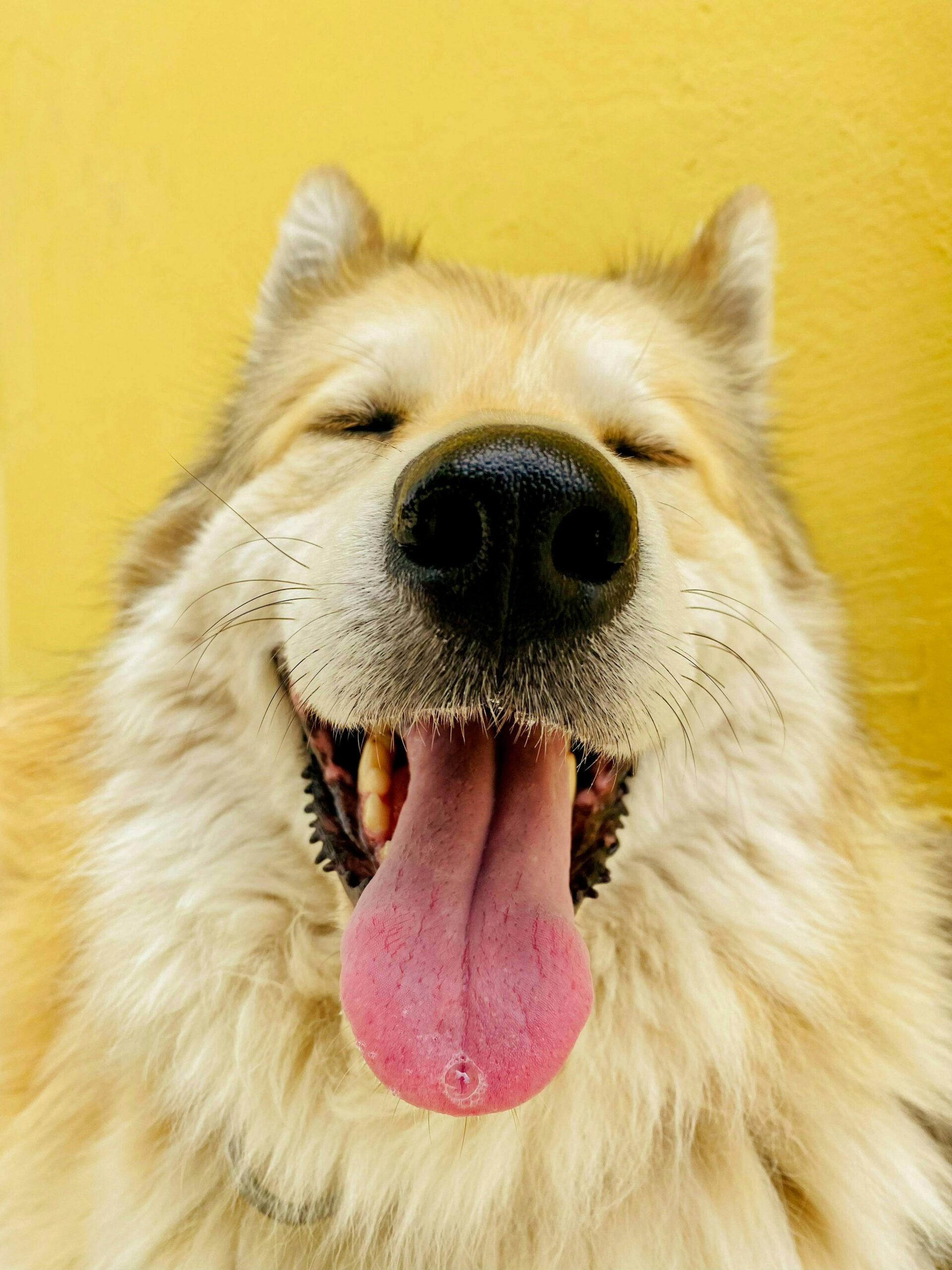If you’re looking for a furry friend who’s not only a steadfast protector but also a loyal companion, the alabai dog might just steal your heart. Hailing from the steppes of Central Asia, this majestic breed boasts a rich history woven with tales of courage and resilience. With their impressive stature and friendly demeanor, alabai dogs are as much about power as they are about companionship. So, buckle up as we embark on a journey through the captivating world of the alabai dog, exploring everything from their origins to their unique personalities!
Origin and History of the Alabai Dog
The alabai dog boasts a rich history that dates back thousands of years. Originating from Central Asia, these magnificent canines were bred by nomadic tribes for their impressive guarding and herding capabilities. Here’s a glimpse into their past:
- Ancient Guardians: The alabai dog, also known as the Central Asian Shepherd, served as a protector of livestock against predators like wolves and bears. Talk about being an overachiever!
- Cultural Significance: Revered in the cultures of Turkmenistan, Kazakhstan, and surrounding areas, these dogs are often celebrated in local folklore and traditions, representing strength and loyalty.
- Modern Recognition: Today, the alabai dog has gained global popularity, prized not only for their protective instincts but also for their affectionate nature within families.
In summary, the alabai dog isn’t just a pet; it embodies a legacy of loyalty and resilience that has endured through centuries! With their remarkable history, you can appreciate the depth of character an alabai dog brings to your home.
Physical Characteristics and Appearance
The alabai dog, also known as the Central Asian Shepherd, boasts impressive physical traits that scream power and elegance. Here’s what sets this breed apart:
- Size:
- Males typically weigh between 110-170 pounds.
- Females range from 90-140 pounds.
- Height:
- Expect males to stand 27-32 inches tall.
- Females usually measure 25-30 inches.
- Coat Color:
- The alabai dog comes in various colors, including:
- White
- Fawn
- Brindle
- Black
- The alabai dog comes in various colors, including:
- Physique:
- Muscular and robust, this breed has a broad head and a deep chest, perfect for guarding.
- Tail:
- Often docked, the tail can also be left long, curling over the back.
In summary, the alabai dog combines strength with a majestic appearance, making it a head-turner in any setting. Owning one means having a stunning companion that looks every bit as powerful as it truly is!
Temperament and Behavior
When it comes to the alabai dog, temperament and behavior truly set this breed apart. Known for their remarkable loyalty and protective instincts, these gentle giants pack a personality punch that can surprise you! Here’s what you can expect:
- Loyal Guardians: An alabai dog fiercely protects its family and territory. Intruders? Not on this pup’s watch!
- Independent Thinkers: These dogs have a strong sense of independence. You might think you’re training a pup, but, in reality, you’re negotiating with a furry diplomat!
- Calm Yet Watchful: While they project a laid-back demeanor, alabai dogs remain keen observers. They can quickly gauge a situation, making them excellent watchdogs.
- Good-natured with Family: With a loving family, they showcase their playful side, engaging in games and fun activities.
Comparison of Temperament Traits
| Trait | Alabai Dog | Other Breeds |
|---|---|---|
| Loyalty | Extremely High | Varies |
| Independence | Strong | Lower in some |
| Protectiveness | Intense | Moderate to high |
| Playfulness | Moderate | Often High |
In essence, an alabai dog proves to be a steadfast companion for those who appreciate their unique blend of temperament traits. Just be ready to embrace their independent spirit!
Training and Socialization Tips
Training an alabai dog can be a rewarding experience, but it also comes with its own unique challenges. These dogs are intelligent, yet independently minded, so you’ll need to channel that formidable brainpower effectively. Here are some tips to help you train your alabai dog like a pro:
- Start Early: Begin training your alabai as a puppy. The sooner you introduce commands, the better foundation you’ll build.
- Positive Reinforcement: Use treats, praise, or even a game of tug-of-war as motivation. Remember, happy pups make for happy owners!
- Consistency is Key: Stick to the same commands and routine. Confusion won’t get you anywhere—trust me, your alabai dog will thank you later.
- Socialization: Expose your alabai to various environments, people, and other animals to ensure they grow up well-rounded.
- Leash Training: This breed is strong, so teaching them to walk nicely on a leash will save you from unexpected jogs around the block.
In conclusion, training your alabai dog requires patience, yet with these essential tips, you’ll cultivate a loyal, well-mannered companion!
Health and Care Requirements
Caring for an alabai dog requires a little bit of dedication, but don’t worry; your furry friend will reward you with unwavering loyalty and companionship! Here’s a quick rundown of essential health and care requirements for your alabai dog:
- Regular Vet Visits: Schedule annual check-ups and keep an eye out for vaccinations.
- Active Lifestyle: These dogs thrive on physical activity. Aim for at least 1 hour of exercise daily.
- Socialization: Early socialization programs help the alabai dog develop into a well-rounded pet. Expose them to various environments, people, and animals.
- Mental Stimulation: Engage your alabai in playtime or puzzle toys to keep their intelligent minds sharp.
- Proper Housing: If they are outside dogs, ensure they have a comfortable, weatherproof shelter.
Key Health Considerations:
| Aspect | Recommendation |
|---|---|
| Exercise | 1 hour daily |
| Grooming | Weekly brushing |
| Diet | High-quality protein |
| Training | Obedience classes encouraged |
By fulfilling these health and care requirements, you’ll nurture a happy and healthy alabai dog, ready to stand by your side through thick and thin!
Nutrition and Diet for Alabai Dogs
Feeding your alabai dog is more than just tossing kibble in a bowl. These majestic pups need a nutrition plan as robust as their personality! Here’s a handy guide to ensure your furry giant thrives:
- High-Quality Protein: Start with meat as the primary ingredient. Think chicken, beef, or lamb. They’re valuable for muscle development and overall energy.
- Balanced Diet: Incorporate healthy grains, vegetables, and fruits to provide fiber and essential nutrients. Carrots, peas, and sweet potatoes make great additions!
- Fat Matters: Opt for healthy fats, like fish oil, that support skin health and provide energy. But, don’t go overboard—a little goes a long way!
- Watch Portions: Due to their size, alabai dogs can be prone to obesity. Measure their food, and consider splitting meals into two a day to keep them svelte.
- Hydration: Don’t forget to keep fresh water on hand. An active alabai dog needs to stay hydrated, especially during playtime!
Tailor their diet around their age, energy level, and health needs. Trust us, a happy alabai dog equals a happy owner!
The Alabai in Family Life
Integrating an alabai dog into your family can be a delightful adventure! These majestic pups thrive in a family environment where they can showcase their loyalty and protective instincts. Here’s why the alabai dog could be the perfect addition to your household:
- Natural Guardians: Alabai dogs are wired to protect their loved ones. They often take it upon themselves to keep an eye on the family, ensuring a sense of safety.
- Gentle Giants: Despite their formidable stature, these dogs possess a surprisingly gentle and affectionate disposition towards children. They often become a child’s best friend and a steadfast playmate without compromising their strong guardian role.
- Adaptable Companions: Whether you live in an apartment or on a sprawling ranch, the alabai dog adapts well to varying living situations as long as they receive ample exercise.
- Social Butterflies: Socialization is key! Early exposure to various people and situations helps the alabai dog become a well-mannered family member who can enjoy outings and family gatherings.
Consider welcoming an alabai dog into your family, and watch as they transform your living space into a warm haven of loyalty and love!
The Alabai in Family Life
Having an alabai dog in your family can feel like adding another member to the clan—only this one has fur, a loyal heart, and a bark that could wake the neighbors! Here’s what you can expect when you integrate this majestic breed into your household:
- Protective Guardian: The alabai dog’s fierce loyalty and natural guarding instincts mean your family will feel secure. They take their job as protectors quite seriously!
- Playful Companion: Don’t let that imposing stature fool you; these dogs love to play! They enjoy interactive games and will keep your kids entertained for hours.
- Gentle Giant: Despite their strength, alabai dogs are known for their gentle demeanor with children. They often develop strong bonds and show great patience.
Comparison of Family Suitability
| Traits | Alabai Dog | Other Breeds |
|---|---|---|
| Loyalty | High | Varies |
| Playfulness | Moderate to High | Varies |
| Protective Instincts | Strong | Varies |
| Child-Friendly Nature | Very Good | Varies |
In conclusion, welcoming an alabai dog into your family can result in countless joyful memories and an unwavering bond that will last a lifetime!
Reasons to Choose an Alabai Dog as a Companion
Are you torn between breeds when selecting your next furry friend? Look no further than the majestic alabai dog! Here’s why this magnificent giant should be your top pick:
- Loyalty Beyond Compare: Known for their steadfast loyalty, alabai dogs are your true companions. Once they bond, it’s a friendship for life!
- Natural Guardian: A built-in protector, alabai dogs have an instinctual desire to guard their families. With their imposing stature, intruders will think twice before approaching.
- Low Maintenance: These dogs don’t require excessive grooming. Just a good brush every now and then keeps their coat in check. Less time grooming means more time snuggling!
- Versatile Ability: Trained for various tasks, from herding livestock to protecting property, alabai dogs adapt to many roles. They truly thrive in active families!
- Gentle Giants: Despite their imposing size, they are gentle and affectionate towards kids, making them ideal family dogs.
Let’s face it, bringing an alabai dog into your life means endless adventures and unwavering loyalty. What’s not to love?
Reasons to Choose an Alabai Dog as a Companion
If you’re on the fence about bringing an alabai dog into your life, consider these compelling reasons that might sway you. This breed truly embodies loyalty, strength, and resilience!
- Protective Nature: Alabai dogs are known for guarding their families fiercely. With them around, your home will feel like Fort Knox!
- Adaptability: While these dogs thrive in spacious environments, they can adapt to different living conditions if given ample exercise and mental stimulation.
- Intelligence: An alabai dog’s smarts are second to none. They pick up commands quickly, making training a fun challenge!
- Strong Bonding: This breed forms deep connections with their families. Expect plenty of tail wags and cuddles as your alabai dog becomes your best friend.
- Low Maintenance: Despite their size, alabai dogs don’t require excessive grooming. A little brushing here and there keeps them looking their best!
Choosing an alabai dog means getting a loyal and loving companion that will make your life richer and more adventurous. Plus, let’s not forget their impressive presence—who wouldn’t want such a majestic friend by their side?
Frequently Asked Questions
What is an Alabai dog and what makes them unique?
The Alabai dog, also known as the Central Asian Shepherd Dog, is a majestic blend of strength, loyalty, and history. Originating from Central Asia, these dogs have been guardians of livestock and property for centuries. Their unique blend of large size, thick fur, and imposing demeanor makes them not just a dog but a steadfast fortress on four legs. With a natural protective instinct and an unwavering bond with their family, they truly embody the essence of loyalty and companionship.
How much exercise does an Alabai dog require?
If you think your couch potato buddy needs a 15-minute walk, think again! Alabai dogs are high-energy canines that thrive on activity. Ideally, they should receive at least 60-90 minutes of exercise daily. Picture long walks, playdates, and maybe even agility training — they need physical and mental stimulation to stay happy and healthy. Remember, a tired Alabai is a happy Alabai! So lace up your sneakers and get moving, or your dog might start thinking the sofa is a great spot for a power nap!
Are Alabai dogs good with families and children?
Absolutely, but with a caveat! Alabai dogs are generally good with families and children, thanks to their protective nature and loyalty. However, their size and strength mean they should be socialized properly from a young age and supervised around little ones. Think of them as the overprotective bodyguard who also loves a good belly rub. Teaching your Alabai appropriate behaviors will ensure that they’re a gentle giant in the family setting, creating a loving bond that’s both robust and sweet.
What are some common health issues in Alabai dogs?
Like all thoroughbreds, Alabai dogs come with their own set of health quirks. Be on the lookout for hip dysplasia, heart problems, and obesity — yes, even big boys like these can get too comfy! Regular vet check-ups, a balanced diet, and of course, ample exercise can keep these hearty hounds in their prime. Think of it as giving your loyal companion the best chance to thrive, ensuring they’ll be by your side through thick and thin!



